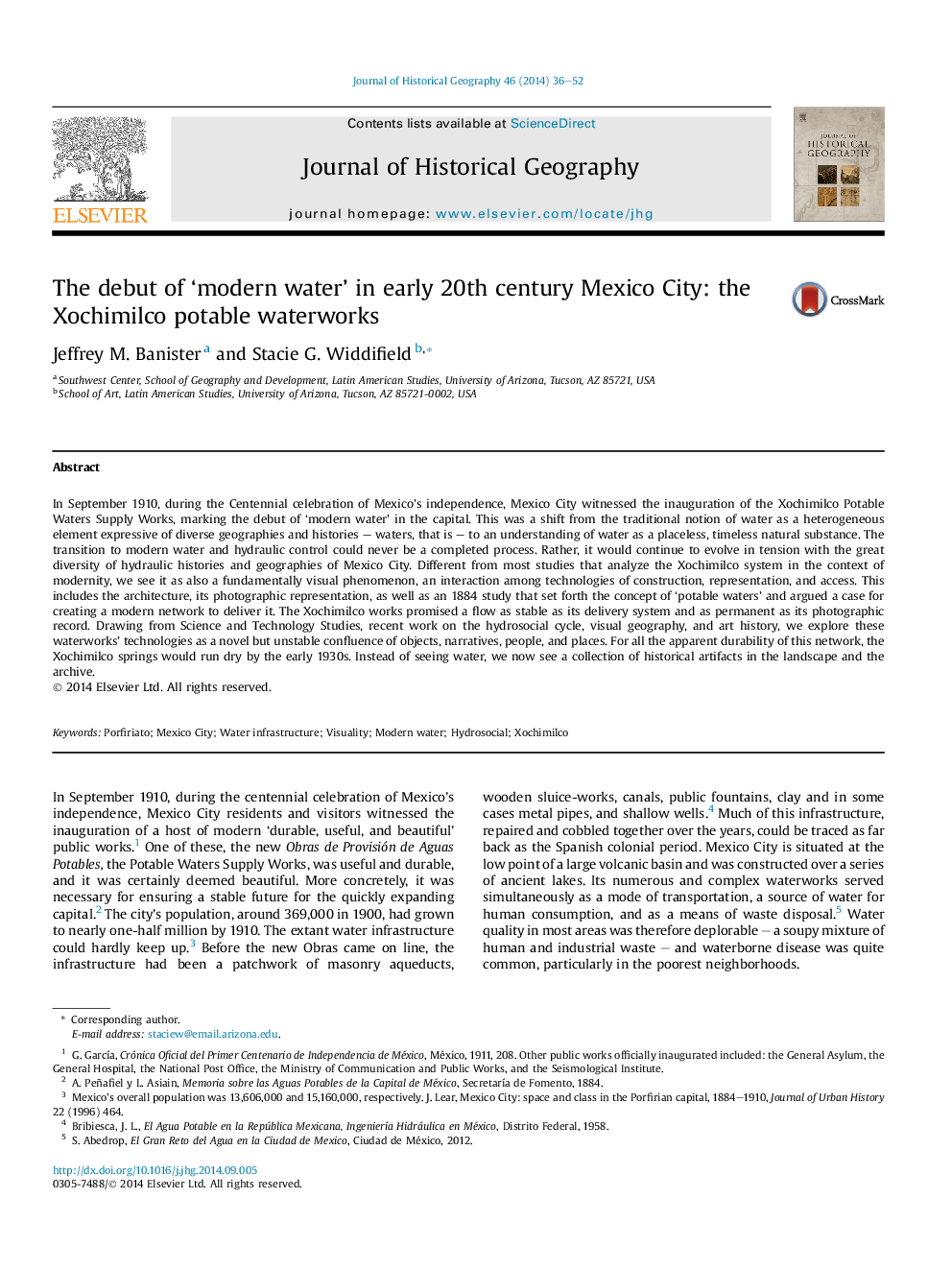| Article ID | Journal | Published Year | Pages | File Type |
|---|---|---|---|---|
| 1039034 | Journal of Historical Geography | 2014 | 17 Pages |
•Visual rhetoric is integral to modern water-resource governance.•Explores historical tensions among representation, landscape change, and water control.•Analyzes the perpetual problem of envisioning historical, hydraulic geographies.•The history of inter-basin transfers strongly determines Mexico City's hydraulic future.
In September 1910, during the Centennial celebration of Mexico's independence, Mexico City witnessed the inauguration of the Xochimilco Potable Waters Supply Works, marking the debut of ‘modern water’ in the capital. This was a shift from the traditional notion of water as a heterogeneous element expressive of diverse geographies and histories – waters, that is – to an understanding of water as a placeless, timeless natural substance. The transition to modern water and hydraulic control could never be a completed process. Rather, it would continue to evolve in tension with the great diversity of hydraulic histories and geographies of Mexico City. Different from most studies that analyze the Xochimilco system in the context of modernity, we see it as also a fundamentally visual phenomenon, an interaction among technologies of construction, representation, and access. This includes the architecture, its photographic representation, as well as an 1884 study that set forth the concept of ‘potable waters’ and argued a case for creating a modern network to deliver it. The Xochimilco works promised a flow as stable as its delivery system and as permanent as its photographic record. Drawing from Science and Technology Studies, recent work on the hydrosocial cycle, visual geography, and art history, we explore these waterworks' technologies as a novel but unstable confluence of objects, narratives, people, and places. For all the apparent durability of this network, the Xochimilco springs would run dry by the early 1930s. Instead of seeing water, we now see a collection of historical artifacts in the landscape and the archive.
